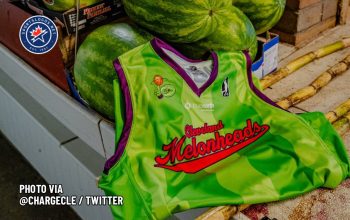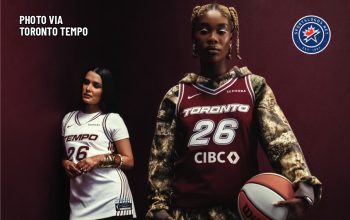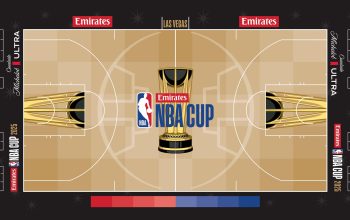
In the town of Logansport, the school’s nickname is the Berries, which is its own interesting and unique story that originates from either a fruit that was cultivated in town or a popular slang term of the 1920s. However, this school’s claim to fame is its mascot, Felix the Cat.
“Due to the uniqueness of Felix The Cat, many instantly identify the mascot with Logansport High School,” said Athletic Director, Brian Strong. “We are very proud of the history of Felix and the fact that he is the oldest mascot in the state of Indiana. It is always heartwarming to see the effect Felix has on people of all ages at our athletic events.”
The feline is the oldest recognized mascot in the state of Indiana and has become the symbol of Logansport High School in Indiana. However, how did a sports program known as the Berries adapt a logo of a cartoon character?

Felix the Cat was a popular cartoon character that made its debut on November 9, 1919, in the silent film Feline Follies. The short film was produced by the New York City-based animation studio owned by Pat Sullivan, the cartoon was directed by cartoonist and animator Otto Messmer. Felix was redesigned by animator Bill Nolan in 1924 and would become a Hollywood star by mid-decade.
There are several versions and, depending on who you talk to, can slightly differ in detail. The clear facts are that a stuffed Felix the Cat doll was purchased by basketball coach Cliff Well sometime in 1926 and given to star player Raymond “Curly” Hupp as a present.
One version was told by Ralph “Red” Tucker in 1996 in a local newspaper article celebrating the mascot’s 70th anniversary. He recounts that the stuffed animal was purchased by Wells prior to a post-game banquet for the team on March 31, 1926, at the Barnes Hotel. The stuffed doll, dressed in the school colors of red and black, caught the attention of the coach in the window of the hotel.

The doll was with the team during the banquet in the Rose Room and would not make an appearance at a game until brought to the floor the next season by head cheerleader Henry “Hank” Muckenfuss.
Tucker points to a small paragraph in the 1926 school yearbook under the Society section. It states that the team was entertained at the hotel and “small gold basketballs were presented to each member of the squad in appreciation of their united efforts and sportsmanship for the year.” However, there is no mention of Felix in the small blurb or anywhere in the yearbook.
Another version was told by former athletic director Jim Jones in 1986 that states that the feline became the mascot on a road trip against Martinsville. The doll was brought in for good luck after the game was going badly for the Berries, and that it helped propel the team to victory. However, Martinsville defeated Logansport twice in 1926 and 1927–in the state tournament, with a 1926 loss in the championship game.
Perhaps the best version appears in the 1941 school yearbook, where Felix was featured on the cover and acted as a guide on many of the lead pages, telling a slightly different story. Coach Wells coached at Logansport until 1945 and would have been able to verify or contradict the story in the yearbook.
“In 1926, Coach Cliff Wells presented a little red and black cat to Raymond “Curly” Hupp. Immediately, this stuffed feline was christened, Felix.” For several weeks, Felix was held captive in a gym locker. But one evening, when an important game was going badly, Felix was taken from the locker and placed in the center of the floor. The Berries were victorious, and thus Felix became our mascot and the first ‘official’ basketball mascot in Indiana.”
However, no one really knows what that important game was, and based on yearbook data, it is somewhat hard to tell. The Berries’ tenth game that year was against West Point, where the club fell behind 18-10 at halftime. The homecoming game would indeed be an important match for Logansport, who did come back to win 43-27.
Perhaps there is evidence in all of these versions, and maybe small bits and pieces are true about Felix. The 1928 yearbook features a photo of a stuffed Felix doll with “Cheer Leader” Muckenfuss. There is also a description with the following details about the lucky feline.

“Known to us all as “Felix”. He is a three-year veteran. He served a year-and-a-half in the old gym and made his home in the Berry Bowl since it’s dedication.”
The original Berry Bowl gymnasium was dedicated in February of 1927; Felix would be featured with photos of cheerleaders in yearbooks of 1930 and 1932. In 1941, the yearbook committee made it prudent to tell the history and importance of him. He would become an actual mascot that a student would dress up as in 1984.
“Other (human) rival mascots like to kick the stuffed animal around the gym floor at halftime. Later, when Felix became a human in a costume, he could defend himself a little better.” LHS alumni Thelma Conrad said.
It is hard to visit Logansport High School and not see Felix is some form. The friendly feline is plastered on the gym court, is decked on in different sporting gear on the sidelines, highlights the flat-screen TV screens, t-shirts, buttons, and multiple banners inside the gym and school.
“Felix has meaning and history,” alumni Rich Vorhees said. “It was the good luck charm for the team, and that is what makes it very unique– it just wasn’t a name, an animal, or figure in history, but an event in time. The stuffed doll of a cartoon was adopted and became the first mascot in the history of Indiana sports as well as one of the most unique in the nation. The name Berries and having Felix is like no other school anywhere, just like our school and community.”

Interestingly, Felix was not only used as a symbol of good luck in Logansport but with other organizations across the country in the 1920s. A few pubications have reported that the New York Yankees used him as a good luck charm during the 1922 season when the club won 94 games and captured its second straight American League pennant.
However, New York Yankees, Museum Curator Brian J. Richards begs to differ. He has not seen any periodical articles, photographs, or player testimonies that mention the feline in-relation to the Yanks.
“I have studied newspaper coverage of the 1922 New York Yankees in considerable depth. In my research, I saw no reference to Felix the Cat or to any other animated mascot. Team bat-boy Eddie Bennett was considered to be the Yankees’ mascot and “good-luck charm” through the 1920s.”
The closest Felix came to the Yankees was in the1922 silent film, Felix Saves the Day, that told the story of Felix stopping a game from taking place at the Yankees then home of the Polo Grounds.
Actress and pilot Ruth Edler took a Felix doll in her attempt to become the first woman to cross the Atlantic in 1927. The U.S. Navy’s Bombing Squadron Two (VB-2B) created a logo of Felix carrying a bomb and is still used on squadron’s cloth jacket patches and aircraft. RCA’s first experimental television transmissions began in 1928 by station W2XBS (New York-Channel #1) in Van Cortlandt Park and featured a stuff Felix doll.
Felix is also quite popular in Los Angeles, where a Chevrolet dealer uses a giant, three-sided neon sign of him that overlooks downtown and the Harbor Freeway. The use of the mascot has been a staple at the showroom since a friend of Pat Sullivan, named Winslow B. Felix, opened its doors in 1921.
The three 50-by-50-foot signs were erected in 1958 and have become a Los Angeles cultural landmark. Felix is also popular throughout the showroom and on promotional items. According to the Los Angeles Times.
Felix Chevrolet branded items can be found for sale online, bringing in $10,000 or more a month to the dealership, Iverson said. Ten percent of the revenue, he said, goes to the current holder of the rights to Felix the Cat, DreamWorks Animation, which is owned by Comcast’s NBCUniversal division.”
Many organizations adopted the friendly feline, whose name means “lucky” in Latin, in the 1920s. There was even one other high school in Indiana that also used the cat as a mascot, but he has been a fixture at Logansport since December of 1926; a proud symbol of both the school and community.
The story of how he officially became a mascot is part of town lore, but perhaps that only solidifies the feline’s aura. Like with every great tale, there is part fact and part fiction. Felix is still a symbol of good luck for the school and sports program.







